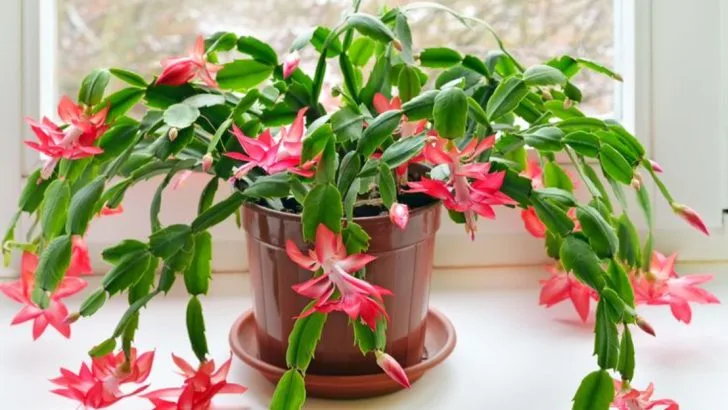Deadheading can be a therapeutic task for some gardeners—but if you’re short on time or simply want a more hands-off garden, there’s good news. Many beautiful plants continue to bloom effortlessly without the need to snip away spent flowers.
These 17 low-maintenance plants are perfect for busy gardeners or anyone looking to simplify their routine. They offer long-lasting color, attract pollinators, and still look tidy as they fade naturally or self-clean.
From carefree perennials to vibrant annuals, these no-deadhead wonders bring all the charm with none of the fuss. Let your garden shine—without lifting the pruning shears.
Hosta
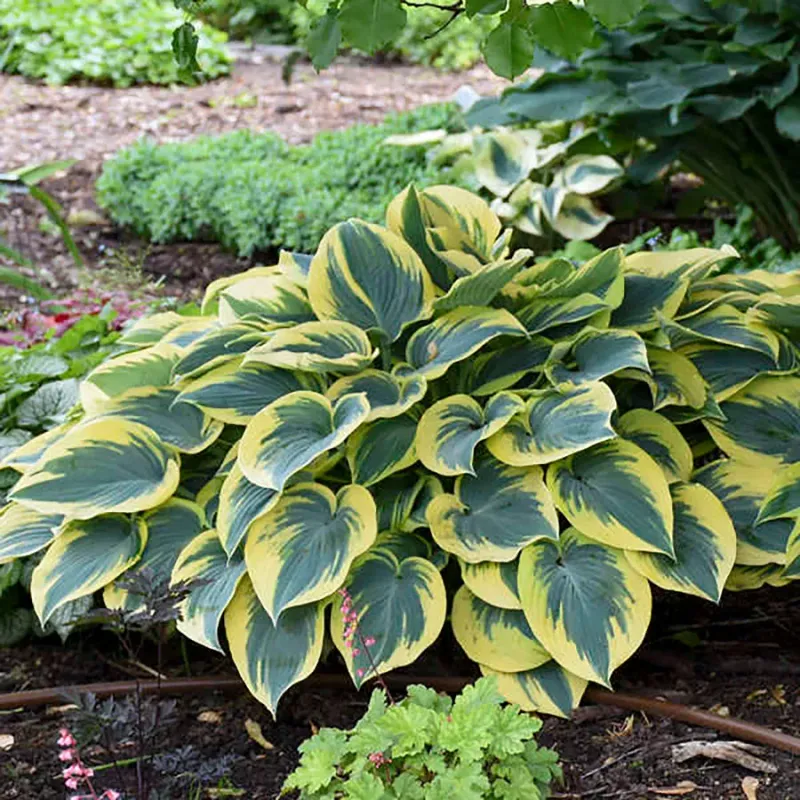
Hostas have earned a spot in countless gardens, offering lush foliage that fills shady spaces with ease. Their wide, glossy leaves range in shades of green and blue, creating a serene, calming effect. Despite their elegance, hostas are remarkably low-maintenance and do not need deadheading. The foliage remains attractive throughout the growing season, with minimal attention required. Perfect for borders and under trees, these plants thrive in partial shade. Hostas also resist many common garden pests, adding to their appeal. Their robust nature makes them a favorite for gardeners seeking beauty with reduced effort.
Lavender

Lavender is synonymous with relaxation, its fragrant purple blooms whisking one away to a tranquil state. This herbaceous plant thrives in sunny spots and well-drained soil, requiring little more than an occasional trim to maintain its form. No need for deadheading here; lavender flowers persist and produce their signature aroma without fuss. Ideal for borders, pots, or as part of a sensory garden, lavender attracts pollinators while deterring unwelcome pests. Its timeless beauty and soothing scent make lavender an essential addition to any garden, delighting both the senses and the soul.
Sedum
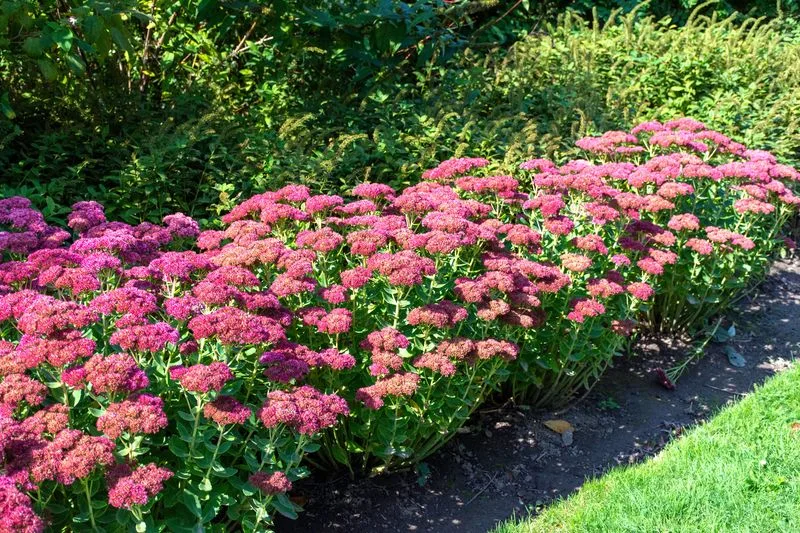
Sedum, with its fleshy leaves and vibrant clusters of star-shaped flowers, is the epitome of a carefree garden plant. This succulent variety endures heat and drought with resilience, making it perfect for rock gardens or areas with poor soil. The flowers, which come in shades of yellow, pink, and white, don’t require deadheading, providing continual interest throughout the season. Sedum’s adaptability and striking appearance make it a preferred choice for gardeners looking for eye-catching, durable plants. It’s an excellent option for those who appreciate nature’s beauty with minimal intervention.
Coneflower

Coneflowers bring joy with their vibrant petals in hues of pink, purple, and yellow. These hardy perennials thrive in sunny positions, attracting butterflies and bees to the garden. Known for their daisy-like flowers, coneflowers are a favorite for those seeking color without constant upkeep. Deadheading isn’t needed; their blooms persist, adding cheerfulness throughout summer. Their sturdy stems and drought resistance mean they flourish even in challenging conditions. Coneflowers are a practical and beautiful addition to any garden, inviting nature’s pollinators while demanding little in return.
Russian Sage
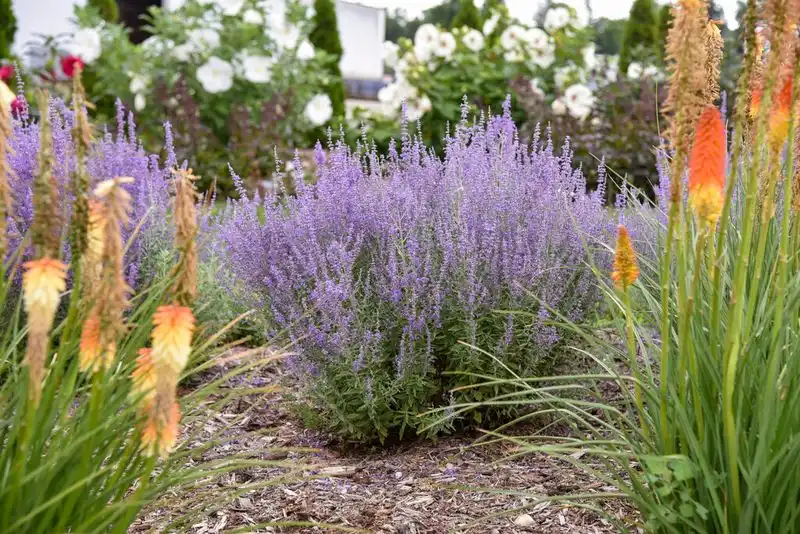
Russian sage combines elegance with endurance, offering silvery foliage topped with airy spikes of lavender-blue flowers. This drought-tolerant perennial thrives in full sun, adding architectural interest to borders and landscapes. There’s no need for deadheading; Russian sage blooms consistently without intervention. Its aromatic leaves deter pests, while the flowers attract beneficial insects like bees and butterflies. Perfect for xeriscaping, this plant withstands the toughest conditions while maintaining its grace. Russian sage is an excellent choice for gardeners desiring a striking, low-maintenance addition to their outdoor spaces.
Daylily

Daylilies are renowned for their vibrant, trumpet-shaped flowers that offer a splash of color in gardens worldwide. With a myriad of shades from orange to deep red, these perennials brighten any landscape. Despite each bloom lasting only a day, the plant continuously produces flowers, eliminating the need for deadheading. Daylilies are robust, thriving in a range of soil types and climates. Their adaptability and striking appearance make them a go-to choice for gardeners seeking vivid, hassle-free beauty. Plant them in masses or as accents for a garden that never fails to impress.
Heuchera
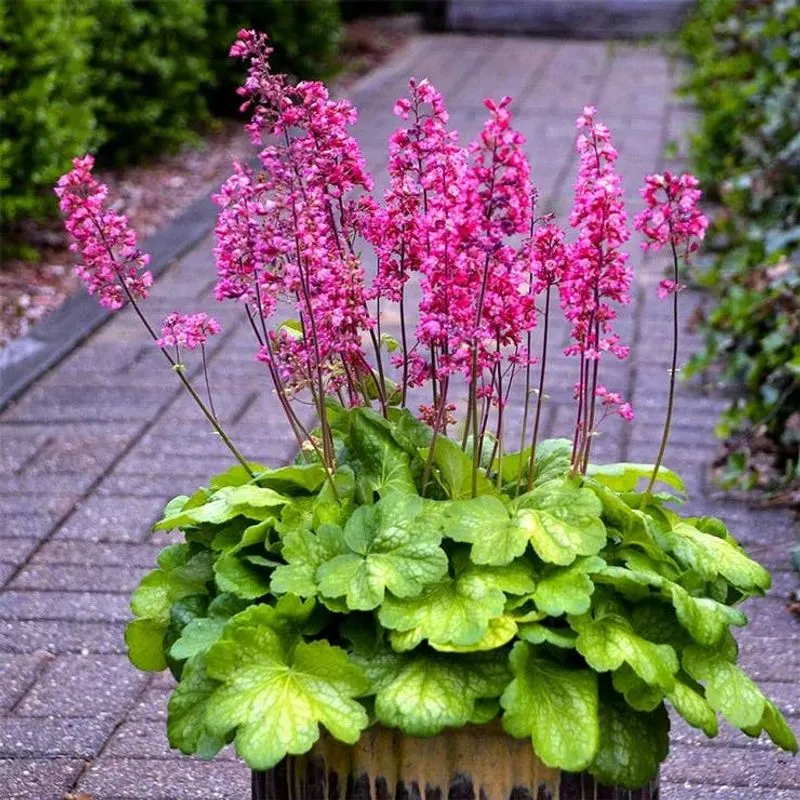
Heuchera captivates with its striking foliage, offering a palette of colors from deep burgundy to lime green. These perennials thrive in shaded areas, providing texture and interest even without flowers. Known for their adaptability, heucheras require minimal care and don’t need deadheading. The leaves remain vibrant throughout the season, and the plant’s small flower spikes add a delicate touch. Perfect for borders or as ground cover, heuchera’s resilience and beauty make it a valuable addition to any garden setting, where it effortlessly enhances the landscape with its colorful charm.
Catmint
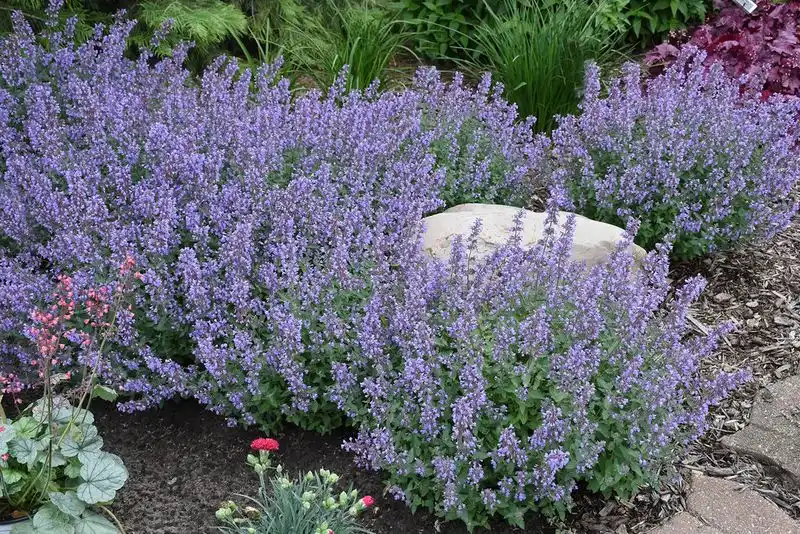
Catmint is a plant of subtle allure, gracing gardens with its gray-green leaves and spikes of purple flowers. Thriving in sunny locations with well-drained soil, catmint is both drought-tolerant and resilient. It doesn’t require deadheading, as it continuously produces blooms throughout the growing season. This perennial attracts pollinators while resisting common pests, making it an excellent choice for eco-friendly gardening. Whether edging a path or filling a border, catmint offers beauty with little demand, perfect for creating a soothing oasis without the need for frequent care.
Coreopsis
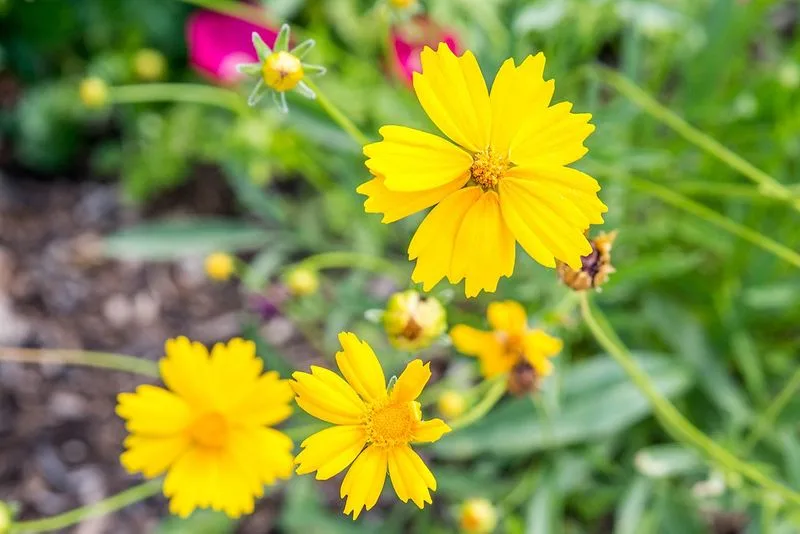
Coreopsis, often called tickseed, delights with its sunny disposition and profusion of daisy-like flowers. These hardy perennials flourish in full sun, offering blooms in vibrant yellow and orange hues. Deadheading is unnecessary; coreopsis plants continue to flower, providing effortless color throughout the season. Their easygoing nature makes them ideal for borders or wildflower gardens. Coreopsis attracts butterflies and other pollinators, enriching the garden ecosystem. For those seeking a splash of sunshine and minimal maintenance, coreopsis is a perfect choice, ensuring a bright, welcoming garden space.
Yarrow
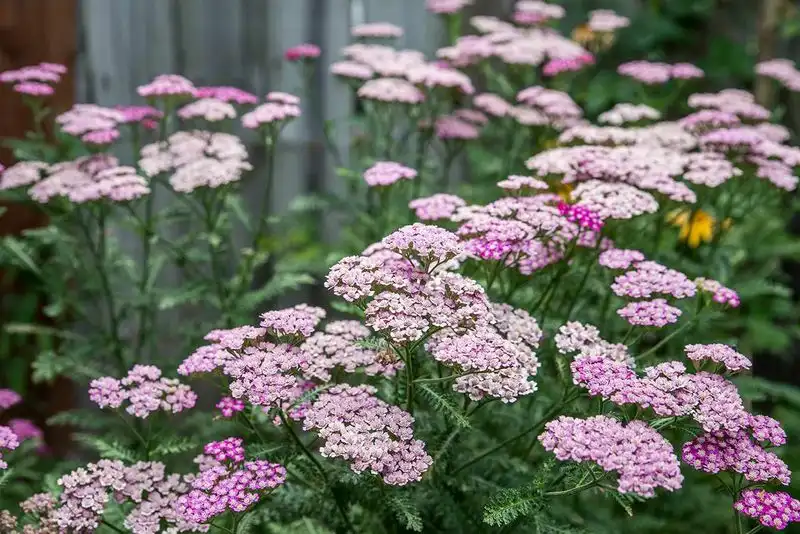
Yarrow stands out with its feathery foliage and clusters of small, flat-topped flowers. This perennial thrives in sunny, dry conditions, making it a favorite for xeriscaping. The flowers, in shades of white, pink, and yellow, don’t require deadheading, ensuring a persistent display. Yarrow attracts pollinators while resisting deer and rabbits, adding ecological value to the garden. It’s perfect for borders, meadows, or cottage gardens, offering both beauty and practicality. Yarrow’s tough nature and visual appeal make it an excellent addition to any garden seeking a touch of wild elegance.
Periwinkle
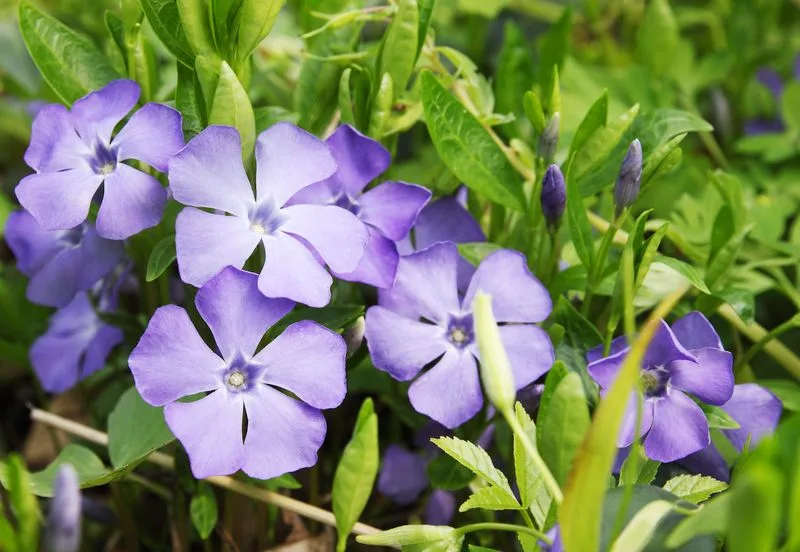
Periwinkle, often used as ground cover, transforms shaded areas with its glossy evergreen leaves and star-shaped blue flowers. This versatile plant requires minimal care, thriving in a variety of conditions without the need for deadheading. Its creeping habit makes it ideal for stabilizing slopes or covering large areas under trees. Resistant to pests and diseases, periwinkle provides year-round interest with its persistent foliage. For gardeners seeking a reliable, attractive ground cover, periwinkle offers a hassle-free solution that enhances the landscape effortlessly.
Liriope

Liriope, often called lilyturf, is a versatile plant known for its grassy leaves and spikes of purple flowers. Perfect for borders or as ground cover, it thrives in both sun and shade. Liriope is incredibly low-maintenance, requiring little more than occasional watering and no deadheading. The plant’s dense foliage suppresses weeds, making it a practical addition to any garden. Whether used in mass plantings or as an accent, liriope’s adaptability and attractive appearance make it a favorite for gardeners seeking simplicity and elegance in their landscapes.
Hellebore

Hellebores are winter’s jewel, offering leathery leaves and nodding flowers that bloom in shades of pink and white. Thriving in shaded areas, these perennials add a touch of elegance when most plants are dormant. Hellebores require minimal care, and there’s no need for deadheading, as the flowers persist through the cold months. They are resistant to deer and other common pests, making them a reliable choice for winter interest. Hellebores are perfect for woodland gardens or shaded borders, providing beauty and resilience when the garden needs it most.
Coral Bells
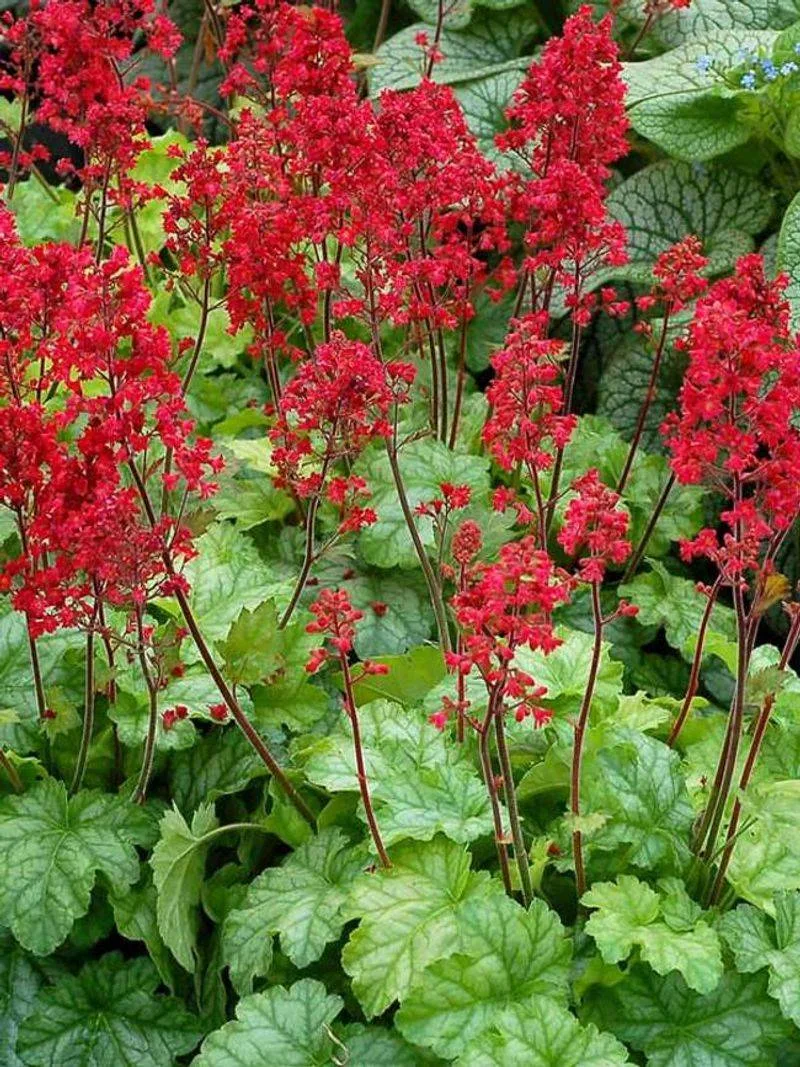
Coral bells, known for their vibrant foliage, bring a splash of color to gardens with their leaves in shades of red, purple, and green. These perennials thrive in partial shade, offering interest beyond their delicate flower spikes. Minimal maintenance is required, as there’s no need for deadheading. Coral bells make excellent border plants or ground covers, with their colorful leaves providing year-round appeal. Their adaptability and resistance to pests make them a favorite among gardeners who appreciate understated beauty with little demand.
Ferns
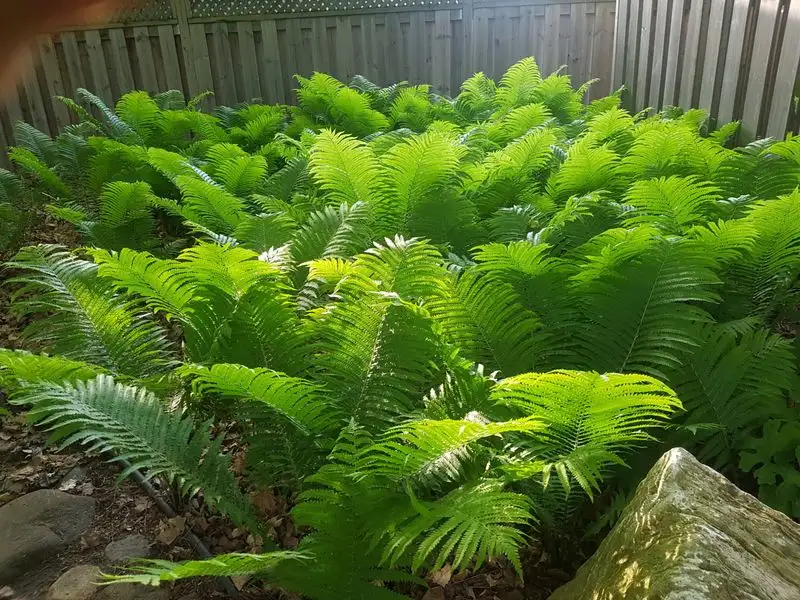
Ferns evoke a sense of tranquility with their lush, green fronds unfurling gracefully in shaded areas. These plants require minimal care, thriving in woodland settings or shaded garden corners. Ferns don’t flower, so there’s no deadheading required, allowing their foliage to take center stage. Perfect for adding texture and depth to any garden, they create a serene environment with their delicate appearance. Ferns are ideal for those seeking a peaceful, low-maintenance garden space, bringing a touch of the forest floor to your backyard.
Ornamental Grasses
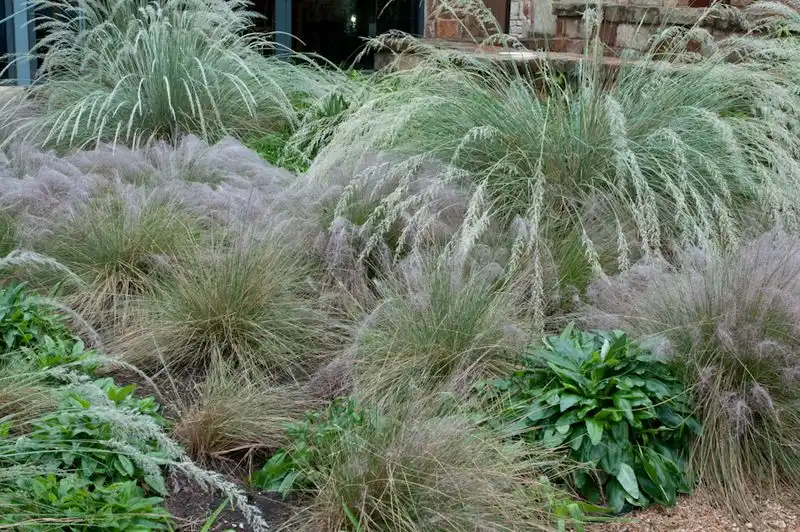
Ornamental grasses bring movement and texture to gardens, with tall, feathery plumes swaying in the breeze. These grasses thrive in various conditions, from sunny borders to dry, open spaces, requiring little more than occasional trimming. There’s no need for deadheading, as the plumes persist, offering interest throughout the seasons. Perfect for low-maintenance landscapes, ornamental grasses add a dynamic element, whether planted en masse or as individual accents. Their resilience and graceful form make them a favorite for modern and traditional gardens alike.
Cactus Christmas Tree

Picture a Christmas tree, but make it desert-friendly! The Cactus Christmas Tree is the quirky twist your garden never knew it needed. This imaginative plant formation is crafted from stacked cacti, adorned with tiny, colorful blooms that mimic festive ornaments. In the bright sunlight, these cacti thrive without fuss, relying on the natural desert climate to flourish.
With an edgy silhouette, this plant brings a touch of whimsy and creativity to any outdoor space. Plus, they require minimal watering and absolutely no deadheading. The Cactus Christmas Tree is a conversation starter, perfect for those who love to stray from the ordinary.

